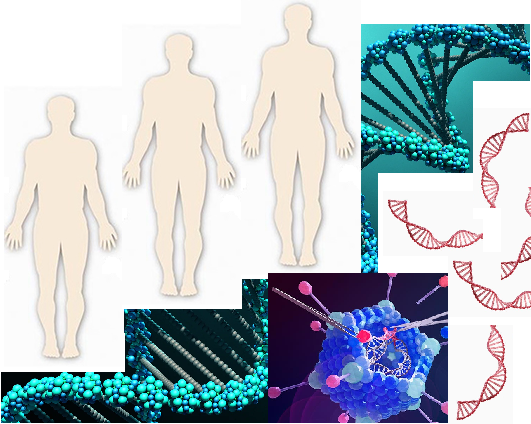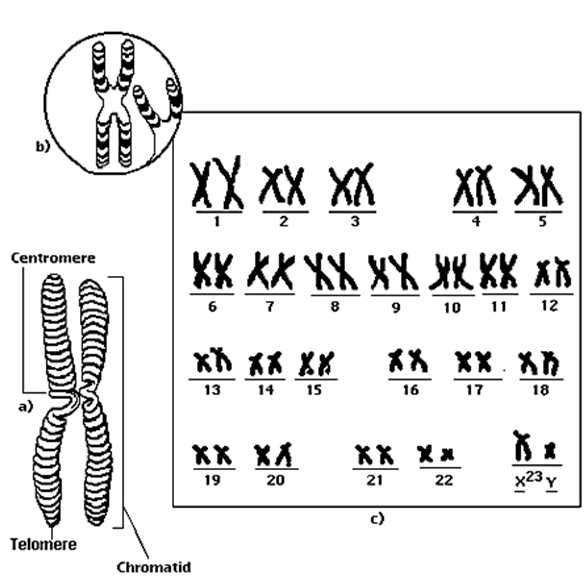Molecular diseases (genetic disorders) are non-infectious inheritable diseases which are usually caused by mutations that alter the normal function of a particular gene.
They are different from infectious diseases such as malaria and tuberculosis which are mainly caused by pathogenic microorganisms in that genetic disorders can be passed on from affected parents to their offspring’s or other family members who inherit the defective gene responsible for the disease. Mutations (i.e. genetic alterations in gene sequence) lead to a variety of genetic diseases in humans.
Some mutations can cause single gene disorders in which there is an error in a particular gene; and typical example of the disease condition that can occur when there is a mistake in a single gene is sickle cell disease (in which an abnormal form of haemoglobin is produced) and cystic fibrosis (in which there is a malfunctioning of the exocrine glands especially the pancreas, and respiratory disorders usually occur in victims of CF).
Chromosomal disorders arise when there is a deficiency in a particular gene or when a given gene is in excess amount. Down syndrome is a typical example of chromosomal gene disorder; and it is a medical condition due to the existence of an extra copy of chromosome 21 in newborns. Children or newborns with Down’s syndrome usually experience learning difficulties and they usually have speech difficulties and broad faces.
When mutation occurs in several genes in addition to some environmental factors (e.g. exposure to mutagens or harmful chemicals), a multifactorial gene disorder such as Alzheimer’s disease and Parkinson’s disease amongst other central nervous system (CNS) malfunctions may ensue. While some genetic disorders are evident at birth, others are obscure and may only appear during the upbringing of the child or later in their lifetime.
The alteration of the normal functioning of a gene (i.e. gene mutation) will cause the proteins that they encode to lose their normal physiological function in vivo; and this may result to a wide variety of genetic disease or disorder. Some notable molecular or genetic disorders in man include haemophilia, sickle cell anaemia, Alzheimer’s disease, Down syndrome, cystic fibrosis (CF), Tay Sachs disease, SCID and various types of cancers including those of the lungs, heart and skin.
Gene therapy techniques could be used to treat these genetic disorders; and they are mainly targeted at correcting or repairing the defective genes that is responsible for the disease condition. In some cases, faulty or defective genes are replaced with the functional or normal genes through the insertion or delivery of the correct genes into the host tissues or cells via gene delivery techniques.
Irrespective of some of the drawbacks associated with the use of gene therapy to manage genetic disorder patients, the approach still holds potential of not only providing cure for sufferers of molecular diseases, but it also has the chances of revolutionizing the practice of medicine in the near future.
References
Alberts B, Bray D, Johnson A, Lewis J, Raff M, Roberts K and Walter P (1998). Essential Cell Biology: An Introduction to the Molecular Biology of the Cell. Third edition. Garland Publishing Inc., New York.
Dale J (2003). Molecular genetics of bacteria. Jeremy W. Dale and Simon Park (4th eds.). John Wiley & Sons Ltd, West Sussex, UK.
Edelstein, M. L., Abedi, M. R., Wixon, J., and Edelstein, R. M. (2004). Gene therapy clinical trials worldwide 1989-2004—an overview. J Gene Med, 6: 597-602.
Ferrua, F.; Brigida, I.; Aiuti, A. (2010). Update on gene therapy for adenosine deaminase-deficient severe combined immunodeficiency. Current Opinion in Allergy and Clinical Immunology. 10 (6): 551–556.
Gardlík R, Pálffy R, Hodosy J, Lukács J, Turna J, Celec P; Pálffy; Hodosy; Lukács; Turna; Celec (2005). Vectors and delivery systems in gene therapy. Med Sci Monit. 11 (4): RA110–21.
Horn PA, Morris JC, Neff T, Kiem HP; Morris; Neff; Kiem (2004). Stem cell gene transfer—efficacy and safety in large animal studies. Mol. Ther. 10 (3): 417–31.
S Li and L Huang (2000). Nonviral gene therapy: promises and challenges. Gene Therapy, 7:31-34. www.nature.com/gt
Salmons B, Günzburg WH; Günzburg (1993). Targeting of retroviral vectors for gene therapy. Hum Gene Ther. 4 (2): 129–41.
Sambrook, J., Russell, D.W. (2001). Molecular Cloning: a Laboratory Manual, 3rd edn. Cold Spring Harbor Laboratory Press, New York.
Sheridan C (2011). Gene therapy finds its niche. Nature Biotechnology. 29 (2): 121–128.
Tamarin Robert H (2002). Principles of Genetics. Seventh edition. Tata McGraw-Hill Publishing Co Ltd, Delhi.
Twyman R.M (1998). Advanced Molecular Biology: A Concise Reference. Bios Scientific Publishers. Oxford, UK.
Vannucci, L; Lai, M; Chiuppesi, F; Ceccherini-Nelli, L; Pistello, M (2013). Viral vectors: A look back and ahead on gene transfer technology. The new microbiologica. 36 (1): 1–22.
Discover more from Microbiology Class
Subscribe to get the latest posts sent to your email.





